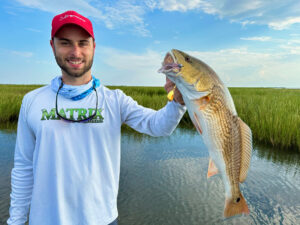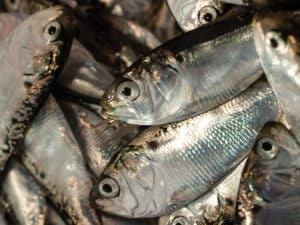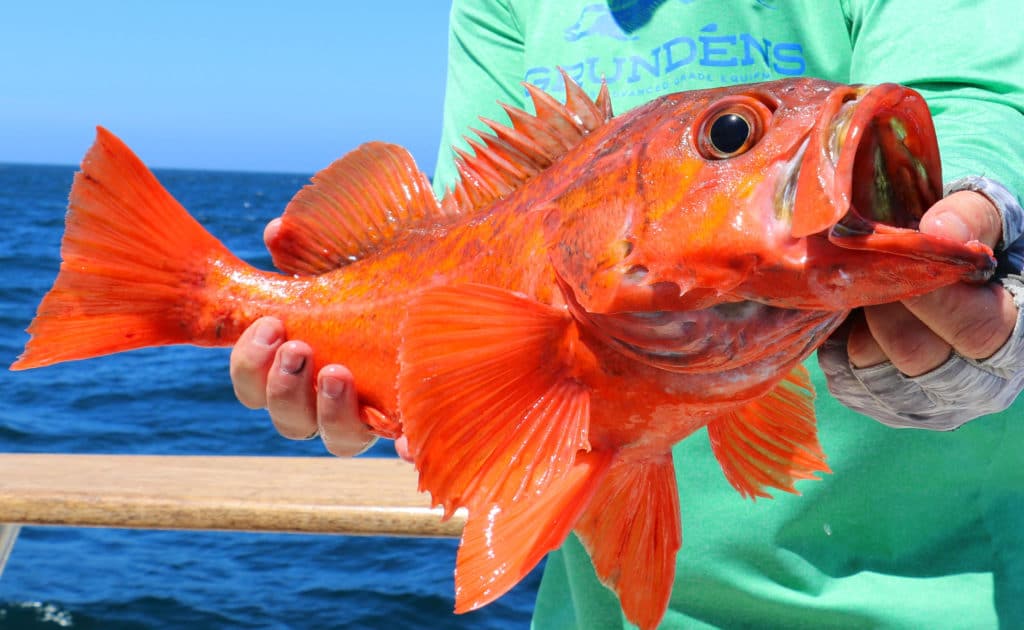
The traditional staggered start of California’s 2021 rockfish season begins on March 1 for ocean waters off the southern part of the state, followed by April 1 for central California, and May 1 for the northern region. This season, however, ranks as more poignant than most, as it heralds the re-opening of areas that have been closed to bottom fishing for nearly 20 years.
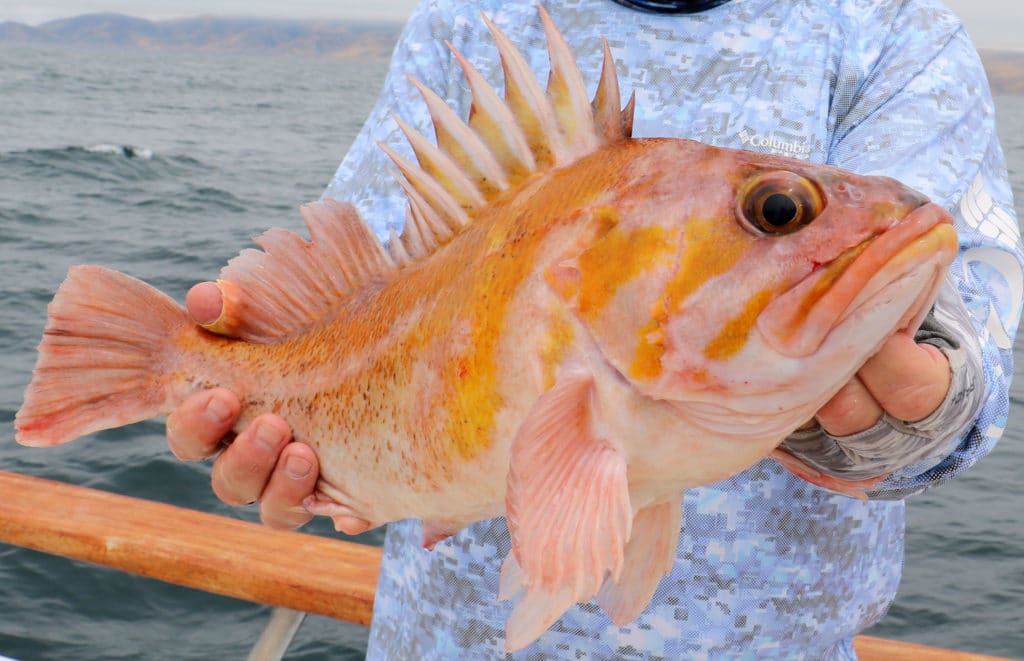
On the Rebound
In Southern California, for example, anglers can now legally fish in bottom depths as great as 600 feet in many areas along the coast. The previous limit, set two years ago, was 450 feet, and before that, an even shallower limit of 360 feet existed in this region. It was not always this way.
Fishery regulators first established depth limits for rockfish, lingcod, ocean whitefish, California sheephead and other bottom species in 2002. The federal Pacific Fishery Management Council and the California Fish and Game Commission faced declining rockfish populations, and so instituted the 360-foot depth limit to reduce fishing pressure and allow stocks to recover. Almost two decades later, studies indicate that this management tool worked. Scientists say that California’s rockfish populations have rebounded; this has led the agencies to re-open a number of areas for 2021. (For a full list of the regulations, seasons, depth limits, protected species and closures, visit the California Department of Fish and Wildlife website.)
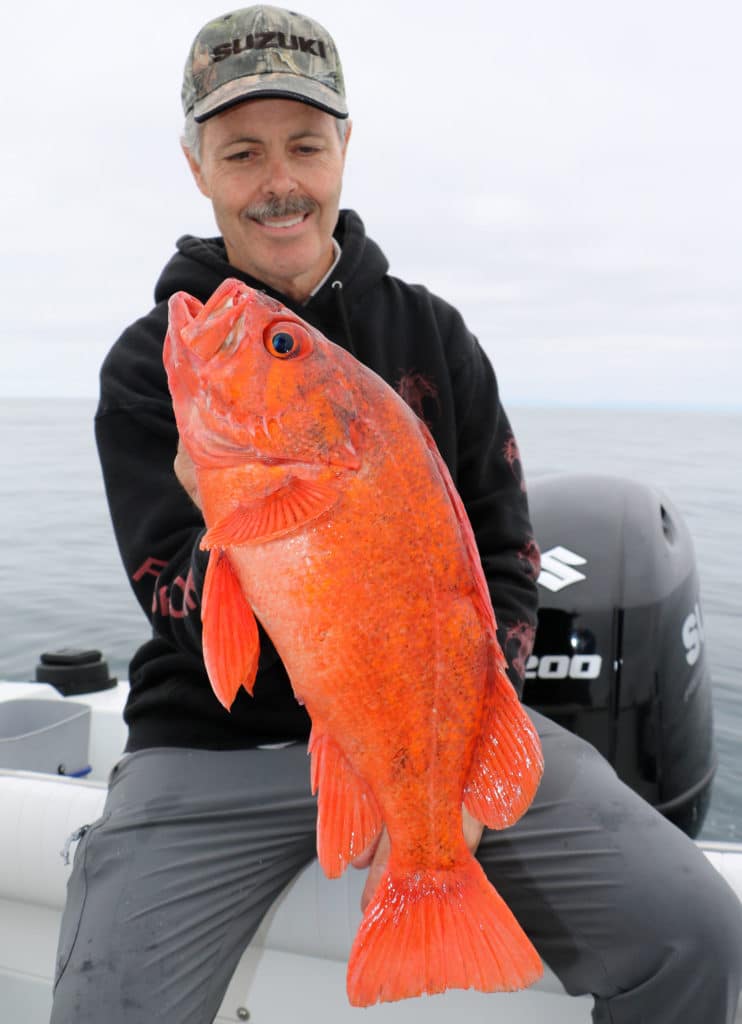
Jig Time
No matter the depth, anglers always look forward to catching rockfish. These deep-dwelling, great-eating species are considered the bread-and-butter of California’s sport fishery. They inhabit waters around rocky structure and readily eat a live or fresh-dead bait, such as a sardine or strip of squid, that’s fished near the bottom. But many veteran anglers prefer to target larger individual fish to fill their daily rockfish bag limit, rather than settling for smaller specimens. The key to catching bigger 4- to 9-pound rockfish and lingcod up to 35 pounds lies in fishing with jigs as opposed to bait, says veteran Southern California saltwater angler Joey Engel.
Natural bait tends to attract smaller fish. “Rockfish that eat the jigs tend to be the big ones,” he explains, noting that he has caught vermilion (aka red) rockfish up to 9 pounds while fishing with metal jigs such as the Shimano Butterfly Flat Fall with double assist hooks.
Engel prefers to target rockfish over rocky structure in 300- to 350-foot depths, using a 300-gram (about 10.5-ounce) Flat Fall. He casts ahead of the boat’s drift so that the line is nearly vertical by the time the jig reaches the bottom. Yet, Engel often hooks up on the drop. “Red rockfish often school 50 to 60 feet above the bottom, and they will jump on the jig as it flutters downward,” he says.
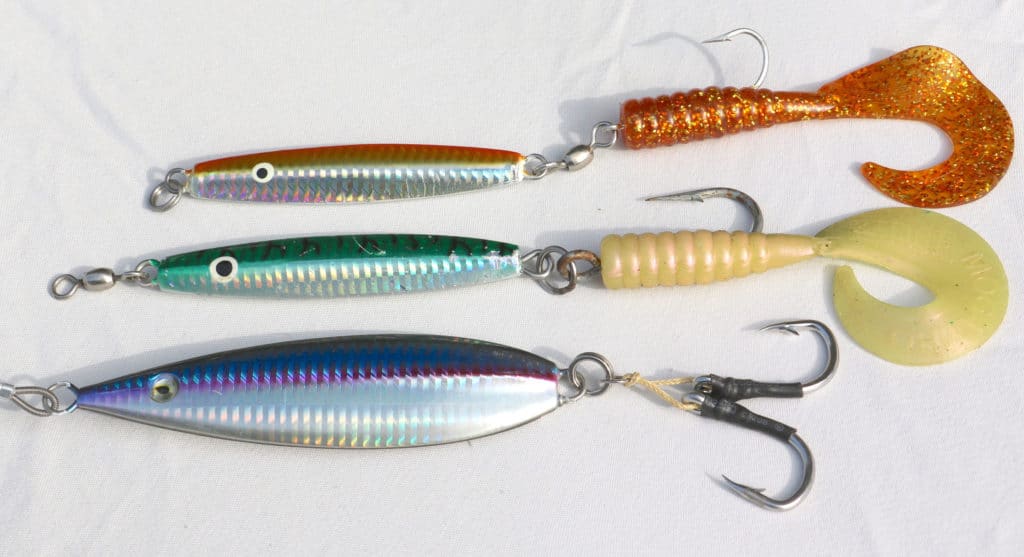
Big Target
Ron Ballanti, an avid Southern California rockfish angler, also fishes with metal jigs such as Cribb’s Jigs in colors such as Glow Pink Tiger or Orange Glow Black Tiger. He also fishes with Promar Ahi Assault jigs in colors such as Baby Red or Blue Bass. He likes to fish the lightest jig possible (determined by drift speed), but generally uses an 8-ounce model for bottom depths of up to 250 feet, and the 10- and 12-ounce versions for anything deeper. Ballanti uses a single 9/0 Siwash hook and threads on a soft-plastic tail like a 6-inch Berkley Gulp! saltwater grub in a color such as White Glow.
“The single hook is less likely to snag on the bottom, and it allows me to thread on curly tail grubs, which creates about a 12-inch profile to attract bigger fish,” Ballanti explains. “I’m not interested in catching any fish less than 4 pounds.” A single hook also holds better on big fish like lings that fight to the surface.
Like Engel, he casts down-drift and sometimes gets bit on the sink. If the jig does reach the bottom, he works it with sharp upward sweeps of the rod, then follows the lure as it sinks to sense any strikes. “I let the lure fall until it ticks the bottom, then jig it upward again,” Ballanti says. “It is a lot of work, and you have to pay close attention and constantly adjust the amount of line to keep the lure in the strike zone and keep it from snagging the bottom, but it pays off.” His average rockfish weighs 5 pounds and up, and he has landed a number of canary, copper and red rockfish in the 9-pound range. He also consistently catches more lingcod when fishing with other anglers that are using bait.
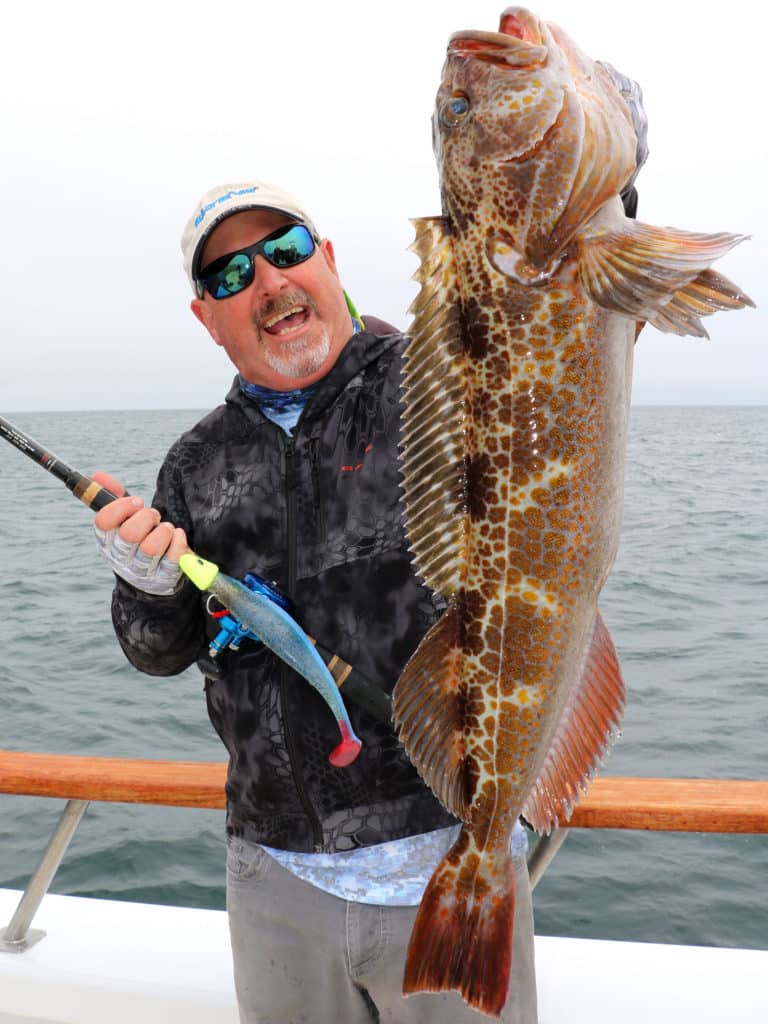
Paddletail Baits
Large soft-plastic paddletail baits such as the Optimum Baits 9-inch Giant Shad, paired with leadheads weighing 8 to 10 ounces, have recently emerged as some of the most effective jigs for big rockfish and lingcod. Ballanti frequently uses paddletails (aka swimbaits), particularly when fishing expansive rocky bottom areas where lingcod lurk.
The best technique involves fishing this jig as vertically as possible—dropping it to the bottom, then winding it upward at a moderate speed with 10 to 12 turns of the reel handle, then dropping it back down again. “The difficulty and labor factors are even greater with these jigs, if you want to stay in the strike zone,” Ballanti says. “A fast drift really shortens your fishing time, as you need to reel in and re-drop if the line scopes out more than 45 degrees.”
However, lingcod in particular can’t seem to resist chasing the big swim baits off the bottom. “They typically inhale the jig and swim upward with it,” Ballanti explains. “If you feel weight on the line, just reel down tight to set the hook. Don’t swing, as that usually just pulls the lure out of the ling’s mouth. If you get short-bit, drop down about 10 feet and start retrieving again.”
Aggressive lingcod often come back, he says. To help eliminate short bites, Ballanti rigs the larger swimbaits with a stinger in the form of an Owner 5/0 assist hook, looped around the bend of the main hook.
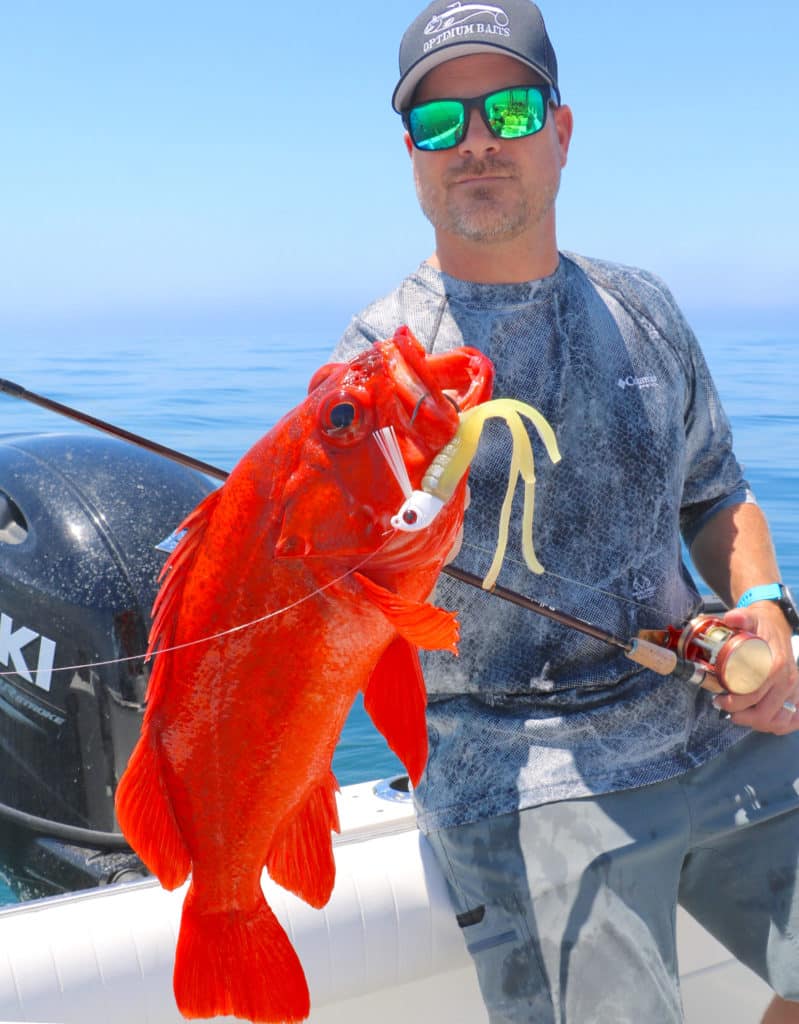
Fantastic Plastic
Another trend centers on the use of large tube baits and soft-plastic octopus imitations for rockfish, lingcod and other bottom species. These include the Hook Up Baits XXL 10-ounce jig, the Mag-12 Swimbait 8-ounce jig, and Optimum’s 9-inch Magnum Octopus with an 8- to 10-ounce leadhead. “I like to jig the Mag-12 Pearl White Glow lure right along the bottom to imitate an octopus,” Engel says. “Big lings and whitefish can’t seem to resist them.”
Read Next: New Fishing Opportunities for Rockfish
Engel also fishes two of the 4-ounce Mag-12 lures at once. He ties one on a 2-foot dropper loop and another 3 feet below it at the end of the main line. “Presenting rockfish with a pair of tube baits seems to drive them crazy,” he says. “They immediately go on the attack, and many times you’ll hook two big fish at the same time. That’s a handful.”
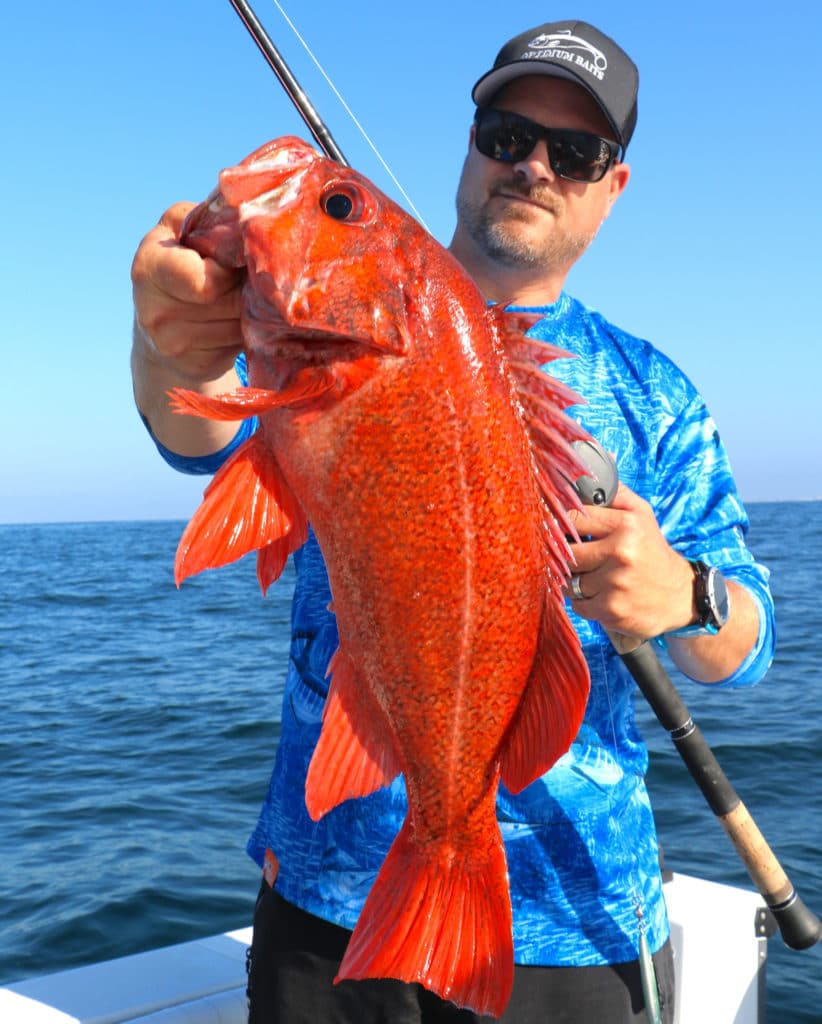
Lighter Gear
While anglers in the past had to use relatively heavy gear for deep-dwelling rockfish, advances in super-thin braided line, low-profile saltwater-grade level-wind reels and graphite fishing rods have enabled the use of lighter outfits that are easier to fish and less fatiguing on anglers. For example, Okuma’s Komodo 400 series low-profile reels can hold more than 300 yards of 40-pound braid, which is sufficient for fishing jigs in depths of up to 400 feet.
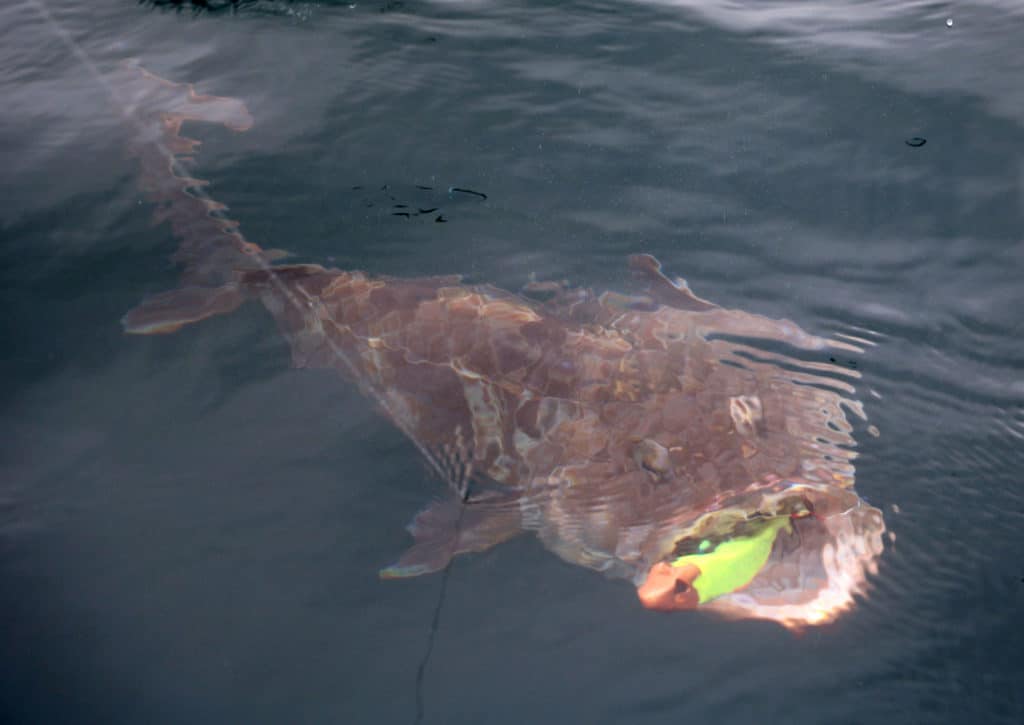
How anglers take advantage of the new depth limits remains to be seen. Many old-timers contend that the biggest bottomfish always live at the greatest depths. So, it is certain that a fair number of California anglers will find a way to fish out to the new legal limits in pursuit of larger rockfish, lingcod, ocean whitefish and sheephead.



